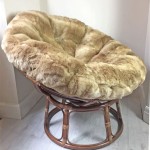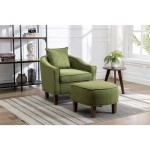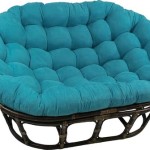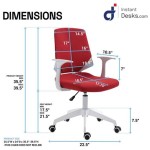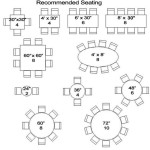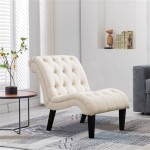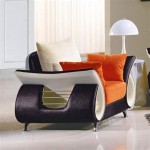Comfortable Patio Chairs with Cushions: A Comprehensive Guide
The allure of outdoor living is undeniable. A patio, deck, or even a small balcony can become an extension of the home, a space for relaxation, entertainment, and connection with nature. However, the functionality and enjoyment of this outdoor space hinge significantly on the quality and comfort of the furniture chosen. Among the most crucial pieces are patio chairs, and when equipped with cushions, they elevate the outdoor experience to a new level of comfort and aesthetic appeal.
This article delves into the world of comfortable patio chairs with cushions, exploring the various factors to consider when selecting the ideal seating for your outdoor oasis. From materials and construction to cushion fabrics and design styles, we will provide a comprehensive overview to guide informed decisions and ensure years of outdoor enjoyment.
Key Considerations in Choosing Patio Chair Frames
The foundation of any comfortable patio chair is its frame. The material and construction of the frame dictate the chair's durability, stability, and overall aesthetic. Several materials are commonly used in patio chair frames, each with its own set of advantages and disadvantages.
Wood: Wood offers a classic and timeless appeal, blending seamlessly with natural outdoor surroundings. Teak is a particularly popular choice due to its inherent resistance to rot, decay, and insects. Other hardwoods, like acacia and eucalyptus, are also commonly used, often treated to enhance their weather resistance. However, wood requires regular maintenance, including cleaning and sealing or staining, to prevent warping, cracking, and fading. The cost of hardwood frames can also be significantly higher compared to other materials.
Metal: Metal frames, including aluminum, steel, and wrought iron, offer durability and strength. Aluminum is lightweight, rust-resistant, and easy to move around, making it a practical choice. Steel, while stronger than aluminum, is susceptible to rust and requires a protective coating, such as powder coating, to withstand the elements. Wrought iron is known for its ornate designs and heavy weight, providing exceptional stability. Metal frames are generally more affordable than wood, but the level of comfort often depends on the design and whether cushions are used. Regular cleaning is necessary to prevent rust and maintain the finish.
Wicker/Rattan: Wicker and rattan are traditionally made from natural materials like bamboo, reeds, and willow. However, modern patio furniture often utilizes synthetic wicker, also known as resin wicker or all-weather wicker. Synthetic wicker is more durable and resistant to moisture, UV rays, and insects than natural wicker. Wicker furniture is known for its intricate weaves and comfortable seating, especially when paired with cushions. Regular cleaning is important to prevent dirt and debris from accumulating in the weave.
Plastic/Resin: Plastic and resin frames are often the most affordable option. They are lightweight, easy to clean, and resistant to moisture. However, they can be less durable than other materials and may fade or crack under prolonged exposure to sunlight. While practical for budget-conscious buyers, the comfort level can be lower without ample cushioning. Some high-quality resin chairs mimic the look of wicker or wood, offering a more aesthetically pleasing alternative to basic plastic chairs.
Beyond the material, the construction of the frame plays a crucial role in its stability and longevity. Look for chairs with sturdy joints, reinforced corners, and a well-balanced design. Welded joints are generally stronger than bolted joints, particularly for metal frames. For wicker and rattan, ensure the weave is tight and even to prevent sagging or unraveling.
Consider the weight capacity of the chair frame to ensure it can safely support the intended users. The frame should also be designed to accommodate cushions of the appropriate size and thickness for optimal comfort.
Choosing the Right Cushion Fabric: Performance and Aesthetics
The cushion fabric is a critical element in the overall comfort and durability of patio chairs. The fabric must be able to withstand the rigors of outdoor use, including exposure to sunlight, moisture, and temperature fluctuations. Several types of fabrics are commonly used for outdoor cushions, each offering different levels of performance and aesthetic appeal.
Acrylic Fabrics: Acrylic fabrics, such as Sunbrella, are considered the gold standard for outdoor cushions. They are highly resistant to fading, mildew, and water damage. Acrylic fabrics are also available in a wide range of colors, patterns, and textures, allowing for customization to match any outdoor décor. While more expensive than other options, the durability and longevity of acrylic fabrics make them a worthwhile investment.
Polyester Fabrics: Polyester fabrics are a more affordable alternative to acrylic. They offer good resistance to fading and mildew, but may not be as durable as acrylic in harsh weather conditions. Polyester fabrics are often treated with a water-repellent finish to protect against moisture. However, this finish may wear off over time and need to be reapplied. Polyester fabrics are available in a variety of colors and patterns, providing ample design options.
Olefin Fabrics: Olefin fabrics are another popular choice for outdoor cushions. They are resistant to fading, mildew, and staining. Olefin fabrics are also lightweight and quick-drying, making them a practical option for areas with frequent rain or humidity. While not as widely available as acrylic or polyester, olefin fabrics offer a good balance of performance and affordability.
Solution-Dyed Fabrics: The term "solution-dyed" refers to a process where the color is added to the fibers during the manufacturing process, rather than being applied to the surface of the fabric. This results in superior colorfastness, making solution-dyed fabrics highly resistant to fading. Acrylic, polyester, and olefin fabrics can all be solution-dyed, offering enhanced durability and longevity.
In addition to the type of fabric, consider the weight and weave of the fabric. Heavier fabrics tend to be more durable than lighter fabrics. A tighter weave will also provide better resistance to water and stains. Look for fabrics that are specifically designed for outdoor use and labeled as UV-resistant, mildew-resistant, and water-repellent.
The color and pattern of the cushion fabric can significantly impact the overall aesthetic of your outdoor space. Choose colors and patterns that complement your existing décor and create the desired ambiance.
Cushion Fill and Design Considerations
The fill of the cushion is just as important as the fabric in determining the overall comfort of patio chairs. The fill material should provide adequate support and cushioning while also being resistant to moisture and mildew.
Foam: Foam is a common fill material for outdoor cushions. Look for high-density foam that will retain its shape and provide ample support. Open-cell foam is more breathable and less prone to trapping moisture than closed-cell foam. However, open-cell foam may also absorb more water and require longer drying times. Some cushions utilize a combination of foam and other materials, such as polyester fibers, to provide a balance of comfort and durability.
Polyester Fiberfill: Polyester fiberfill is a lightweight and affordable option for cushion fill. It provides good cushioning and is resistant to mildew. However, polyester fiberfill may flatten over time and require replacement. It is also less supportive than foam.
Down Alternative: Down alternative fills, such as shredded polyester or microfiber, offer a soft and luxurious feel similar to down. They are hypoallergenic and resistant to mildew. However, down alternative fills may not be as durable as foam and may require frequent fluffing to maintain their shape.
Beyond the fill material, the design of the cushion can also impact comfort and aesthetics. Consider the thickness and shape of the cushion. Thicker cushions generally provide more comfort. Cushions with contoured shapes can offer better support for the back and legs. Some cushions feature ties or straps to secure them to the chair frame, preventing them from slipping or sliding.
Consider the overall style of your outdoor space when choosing cushion designs. Simple, solid-colored cushions can create a clean and modern look. Patterned cushions can add a touch of personality and visual interest. Coordinating the cushions with other outdoor accessories, such as throw pillows and rugs, can create a cohesive and inviting outdoor living area.
Regular cleaning and maintenance are essential to prolong the life of your patio chair cushions. Follow the manufacturer's instructions for cleaning and care. Spot clean spills and stains promptly to prevent them from setting. Store cushions indoors during periods of inclement weather to protect them from damage.

Patio Chairs Furniture The Home

Papasan Scoop Outdoor Patio Chairs Set Of 2 Natural Walmart Com

Lauri Patio Chair With Cushions Lounge Outdoor Chairs Saracina Home

Walker Edison Furniture Company Papasan Rattan Removable Cushions Metal Outdoor Patio Lounge Chairs With Natural Set Of 2 Hdrrsc2nl The Home

Patio Chairs Furniture The Home

Beaumont Cushioned Chair Patio Dining Set True Value

Aoxun 3 Piece Patio Chairs Set Swivel Rocking For Wicker Bistro With Beige Cushions Outdoor Rocker Walmart Com

Outsunny Garden Back Chair Cushion Comfortable Patio Seat Pad With Backrest For Outdoor Indoor Use Light Grey Diy At B Q

2pk Outdoor Rocking Chairs With Cushions Lokatse

Prohiker 3 Piece Patio Conversation Bistro Set Outdoor Chat Furniture Balcony Chairs W Table And Cushions Porch For Pool Garden Blue Walmart Com
